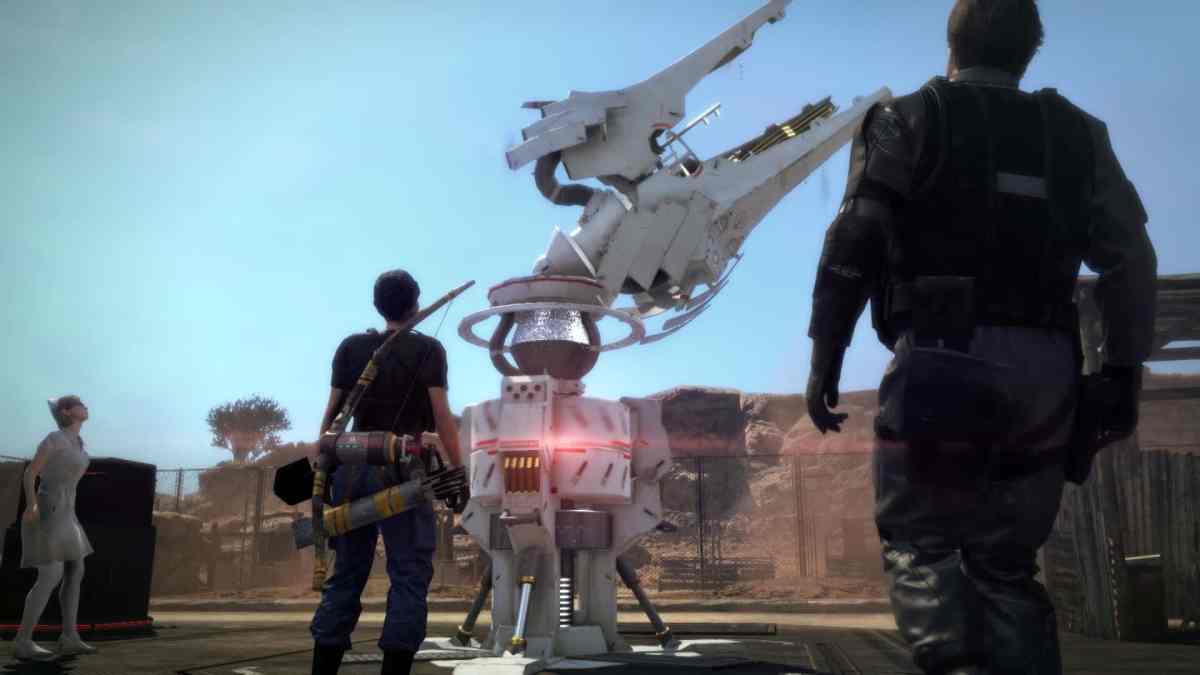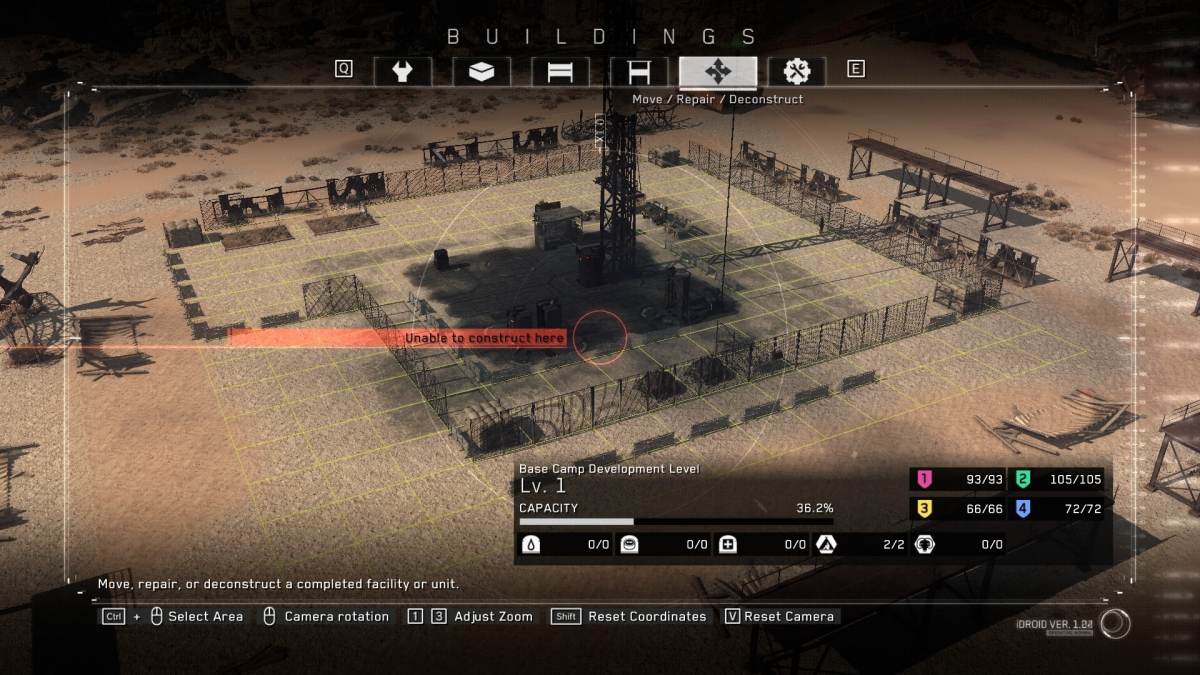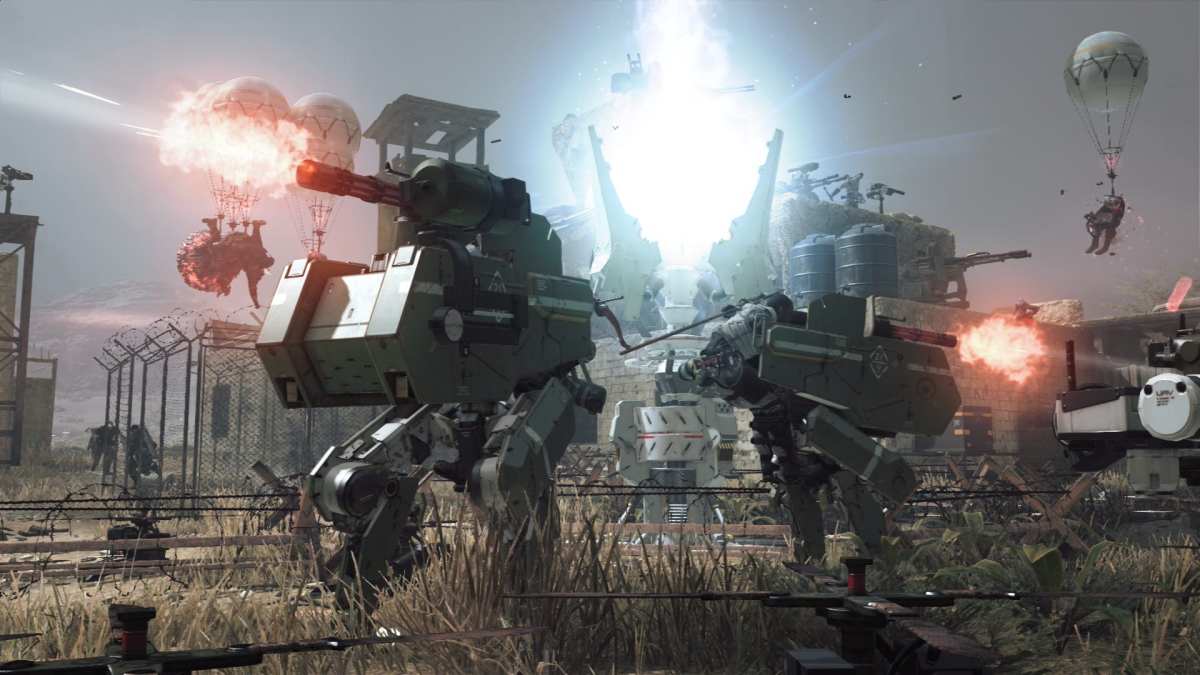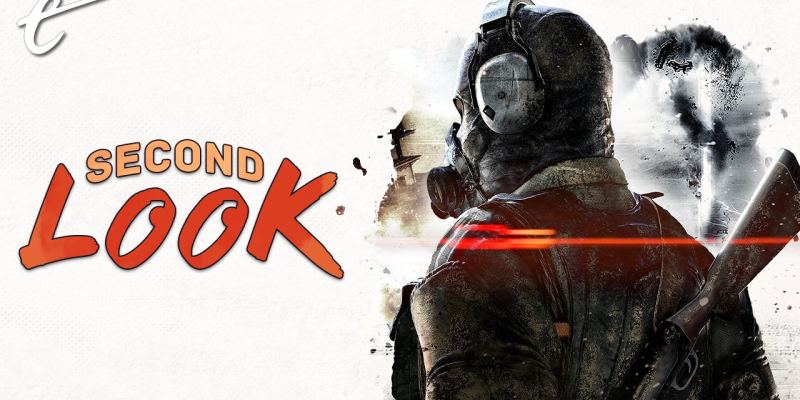My oxygen is depleted. I’m down to less than a third of my health. Enemies are stalking the hills and valleys, snarling in packs. If I step onto the road, I’ll at least see my wayfinder to the nearest teleport pad, but it’ll leave me vulnerable. If I don’t stand up though, my stamina will drain faster from crawling, and if it runs out, I’ll have to stop, gasping for infected air. My hunger is so deep that my vision’s blurring, aim of my bow off by a whole inch — heck, that’s why I’m out here, trying to get something to eat so I don’t die. Now the very expedition has me on the verge of collapse. I arrive at the teleporter without a moment to spare, arrive back at base, and breathe deep. I cook my food, drink some dirty water so I at least have some fluids in me, no matter the risk of getting the bends. And then I go back out into the dark, oppressive clouds of the Dust, searching for anything and anyone worth saving in the miserable alternate dimension that is Dite. A typical night in Metal Gear Survive. I wouldn’t change a damn thing.
By all accounts, Metal Gear Survive was barely regarded as existing — tossed aside from the public consciousness in minutes. I can’t blame anyone for that, as it’s definitely not a mass-appeal sort of game. So why is it then that it has enough of a player base that it’s still receiving updates and events, let alone active servers to play multiplayer on? How could a survival game even work within the confines of Metal Gear Solid V: The Phantom Pain’s gameplay?
It turns out — with deceptive ease, as every hour further I pour into the game, I find countless new details and refinements made by the Konami dev team. Make no mistake, Survive isn’t the work of a couple hasty weeks slapping together assets, but building upon a strong base to offer a fresh take in a genre where I was worried no one could break new ground.
The trick to Metal Gear Survive is that, unlike so many survival games, it’s not starting from ground zero. The game feel, combat, environment assets, animations, and more were all finished, so instead Survive’s team made a clear play for emphasizing the struggle to survive above all else.

You’re never left in a position of power for long. Every element knits together, serving multiple purposes that quickly leave you bereft of supplies. You need food and water, but so do your allies if you expect them to maintain your base. If you plan to spend an extended time out in the Dust zones, you’ll spend precious Kuban energy to recharge your air filter, weakening its integrity in kind, with ever escalating costs. Building out your base defenses is key, but those same defenses are just as useful defending teleport stations and wormhole tears you’ll need to further your expeditions.
Whenever possible, these facets are diegetic — offering a cohesive world that you inhabit, rather than purely game-y systems. You manage your stats over your iDroid tablet. Base management is run through a duty roster via your AI Virgil’s computer interface. Farming food, animals, and water requires dedicating precious space to each venture and not giving into impulsively killing and eating every resource you find. You have to mark your map yourself to keep track of where animals, unopened supply crates, vehicles, water sources, and more can be found. Even your HUD is minimized, centralized around your body while the majority of the visual real estate is left open for you to perceive. The FOV is a bit tight, but given how little is in the way and how you’re far from the seasoned ultra-soldier Solid Snake is, you really feel as though you’re just a merc caught up in a bad situation.
As I write this article, I’m currently still playing Metal Gear Survive; it’s just an Alt+Tab away. I’m hooked. I’m tracking down another teleport pad to further my expansion across Dite, an alternate dimension full of horrific creatures that look like they’re straight out of Prince of Persia: The Sands of Time and Silent Hill. It’s not merely the heavily advertised Wanderers, the infected corpses of those who fell before your arrival — there’s all manner of ghastly nightmare fuel wandering in the darkest holes, some towering above or crawling in swarms deep beneath the surface of abandoned bunkers. My daily challenges warn me of ever fiercer creatures to come, which keeps me on guard, saving what little ammunition I have for when the next threat arises.

Part of what’s so refreshing about Survive is that, like several other games we’ve talked about this year, it actually understands the difference between player agency and player empowerment. Agency is choice, but that’s no guarantee every choice is the right one — let alone one you consciously make. Impulsively charge into any situation in Survive and you might lose all your progress up till the last time you returned to base (which is the only place to save progress). However, be too cautious and that’ll cost you just as well, with a small oxygen tank, limited resources, and constantly ticking hunger and thirst meters. You’re always walking the line of risk/reward, no matter the approach you take.
There’s no easy way to skirt by in Metal Gear Survive. It’s a hardass game if you’re walking in, expecting something like the countless titles that let you go from stone age weapons to assault rifles in a few hours. I’ve got a pistol and shotgun in Survive. I’ve fired them less than 30 times, with good reason. They draw attention, cost almost half a dozen resources for a meager few bullets, and can’t be reclaimed like arrows. Not that your bow and arrow are some Far Cry-tier instant takedown weapon — most enemies take two arrows minimum to down, and those are the weakest infected. Plus, the arc of your bow varies heavily based on positioning and how long you’ve held it, with no visual prompts beyond a basic range finder.
Speaking as someone who’s had to uninstall and replace a washing machine and dryer, rewire a sink, and fight with countless other home improvements in the middle of a pandemic — I believe Metal Gear Survive is one of the most authentic explorations of struggling to make do with limited supplies and even sparser assistance. No one is holding your hand in Survive. If you stumble and hurt yourself, you’ve got to keep yourself going. If something’s broken, it’s up to you to replace it. You can mistime a swing of your fire axe and take a laceration to the gut, which means you’ll either have to sleep it off or spend costly medical supplies.

The handful of times you are given guidance, it’s for the basics of playing, not how or when you’ll receive the means to make your own clean water, where the best prey tends to flock, or which crates contain recipes that’ll help instead of just offering a new hat. Instead, the quest system simply urges you to venture deeper into danger. The only way to progress is to push yourself harder, whether that’s through scavenging, combat, or managing your small team of survivors.
But to be clear: Survive is never unfair. It’s not Dark Souls either, simply telling you to try again. In fact, every day, you’ll receive a new drop of rations and supplies — they won’t last for hours of play, but if you’ve hit a wall, they can make a significant difference in a pinch or help you rebuild if you took a serious hit. Survive wants you to know you can only try something so many times before you need to take care of yourself and recover; it’s a very important lesson, especially in today’s world.
Co-op play is also an option, though the jump in enemy numbers is enough to warrant you’ve at least spent a few hours familiarizing yourself before going in too deep. Not that it can’t be fun, but that’s more of endgame shenanigans. Much like Generation Zero, Metal Gear Survive is a co-op game best played solo at first, then later with friends to finally gain some catharsis in taking on grander fights with your hard-earned weapons, skills, and gear.
Granted, I will agree that it doesn’t quite fit the Metal Gear license, but no more than what can be said of Metal Gear Acid. Would it be better served as a Stranger Things or even weird Silent Hill spin-off? Definitely. Heck, there’s a part of me that wonders, given Silent Hills’ rumored transdimensional storyline and a crossover event, if Survive might’ve at one point been a way to bridge Konami’s two biggest IPs.

However, one can’t deny that it still has all the quality voice acting, overwrought script, elaborate plot twists, and diverse cast befitting a Metal Gear game. It’s heartwarming, cheesy, ham-fisted, and amusing. You don’t play it for the plot, but Reeves, Miranda, Chris, and co. help keep you pushing forward to see where their journeys might lead. Just like everything else in Survive, they’re more than they appear on the surface.
Metal Gear Survive is a game I kept putting off, because even despite my penchant for trying really weird games, the initial anti-hype wave had me worried it was a missed opportunity and nothing more than that. Don’t make my mistake. The attention to detail put into this game is too much for me to condense into a single column: The game traces your steps on your map after your latest run so you can figure out future routes. Your inventory lets you know what you already have at base so you don’t waste time hauling excess materials. There are two states of encumbered so you can choose how much you want to hedge your bets while scavenging.
I can see now how Metal Gear Survive has found its small yet devoted fanbase. It’s far from tactical stealth espionage, and you won’t see Metal Gears duking it out across the frostbitten fields of an iconic military bunker — but what Survive does offer is worth exploring, for those bold enough to brave the sands of Dite.
